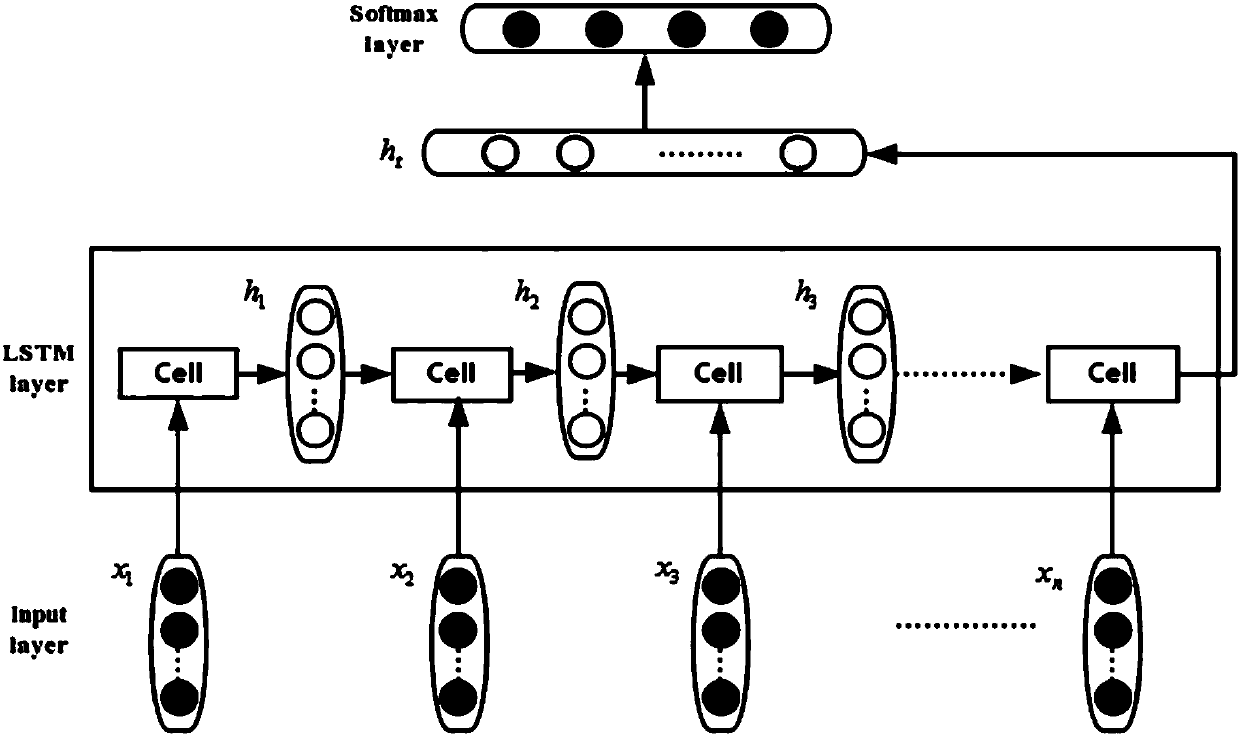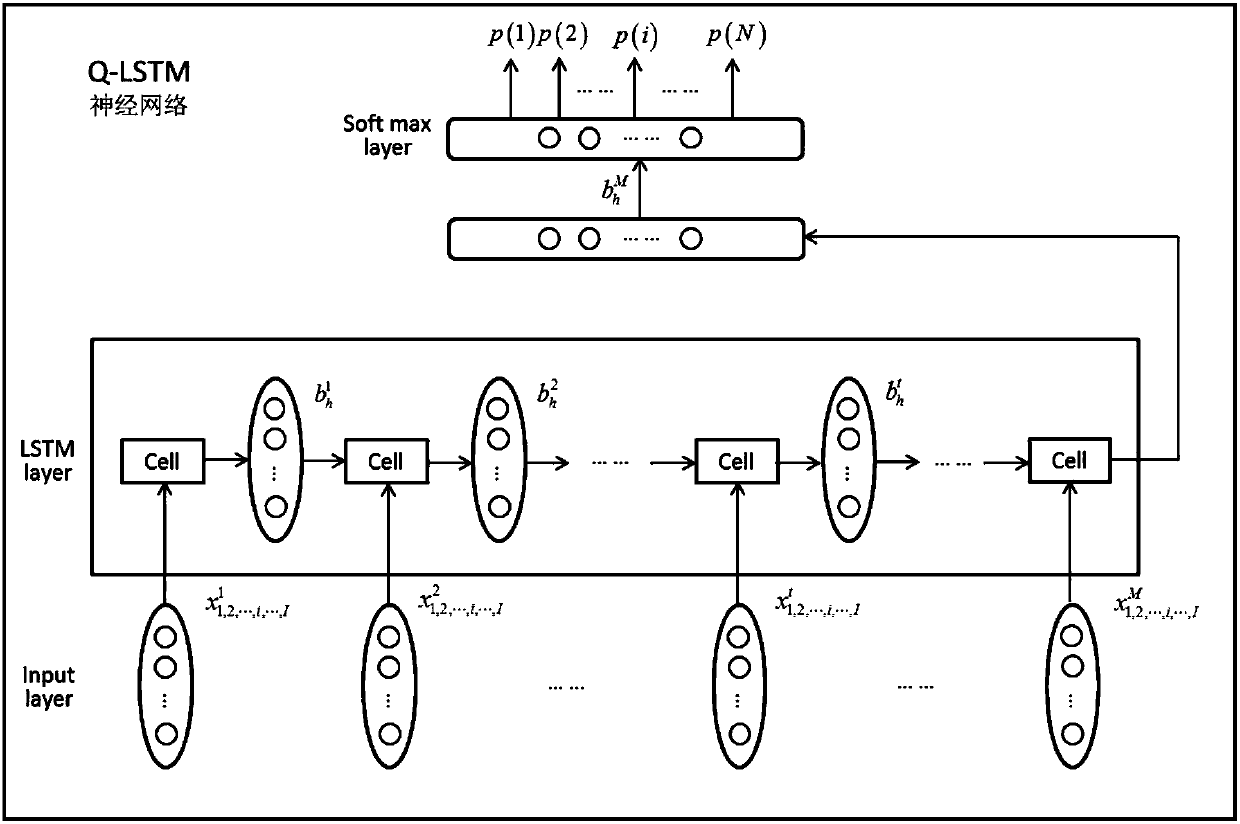Neural network-based dialogue semantic intention prediction method and learning training method
A neural network and neural network model technology, applied in the field of dialogue semantic intent prediction, learning and training, can solve problems such as the inability to use real-time experience online for autonomous learning, the lack of deep semantic information related to tasks, and the inability to obtain initialization vector representations, etc., to achieve high The effect of semantic intent prediction, saving time and economic cost, and improving the accuracy of description
- Summary
- Abstract
- Description
- Claims
- Application Information
AI Technical Summary
Problems solved by technology
Method used
Image
Examples
Embodiment 1
[0067] The present invention provides a "Q-LSTM neural network-based chat robot dialogue semantic intent prediction method", its model framework is as attached figure 2 As shown, it includes the design of modules such as input vector generation, Q-LSTM neural network, random intent selection, tentative dialog generation, human dialog acquisition, intent matching check, and input status update. The design steps of each module are as follows:
[0068] Step 1, input vector generation module design.
[0069] Carry out preprocessing such as word segmentation on a large amount of data collection (labeled corpus) collected in advance;
[0070] Generate a vocabulary for non-repetitive words in the statistical corpus;
[0071] At a certain moment t, the sentence text of a certain length I in a certain time segment τ of the human interlocutor (said before or just said) is expressed in a one-hot vector space according to the vocabulary to form a sentence matrix S τ , as a certain set ...
Embodiment 2
[0149] The learning and training process of the "Q-LSTM neural network-based chat robot dialog semantic intent prediction method" provided by the present invention is shown in the attached Figure 5 As shown, the specific steps are:
[0150] Step 1. Collect and organize human chat sequence dialogue data.
[0151] According to the service field to be applied by the chat robot, through some public social platforms, a large number of sequence sample data of actual conversations between people and between machines and people are collected, and after basic semantic processing, a dialogue database is established.
[0152] Step 2, sequence dialogue data preprocessing and semantic intent labeling.
[0153] For the database generated in step (1), firstly use some keywords and template rules to preprocess the data, and filter out some unintentional data; then carry out semantic preprocessing and semantic intent labeling of sequence dialogue data samples, the specific steps are as follo...
Embodiment 3
[0178] With the intelligent customer service (chat robot) of real estate intermediary as the application background, based on the chat record data basis of the customer service person-person and man-machine dialogue of a certain domestic large-scale real estate intermediary agency in a certain city, according to the above-mentioned implementation of the present invention provided A "Semantic Intent Prediction Method for Chat Robot Dialogue Based on Q-LSTM Neural Network", the specific steps are as follows:
[0179] Step 1. Collect and organize human chat sequence dialogue data. Using the customer service platform of a large domestic real estate agency in a certain city, collected two months of human-human and human-computer conversation and chat record data about 30,000 sets of sequence sentences, and the number of sentences in each set of sequence sentences does not exceed 10 , the number of participles included in each sentence does not exceed 30, and after basic semantic pr...
PUM
 Login to View More
Login to View More Abstract
Description
Claims
Application Information
 Login to View More
Login to View More - R&D
- Intellectual Property
- Life Sciences
- Materials
- Tech Scout
- Unparalleled Data Quality
- Higher Quality Content
- 60% Fewer Hallucinations
Browse by: Latest US Patents, China's latest patents, Technical Efficacy Thesaurus, Application Domain, Technology Topic, Popular Technical Reports.
© 2025 PatSnap. All rights reserved.Legal|Privacy policy|Modern Slavery Act Transparency Statement|Sitemap|About US| Contact US: help@patsnap.com



